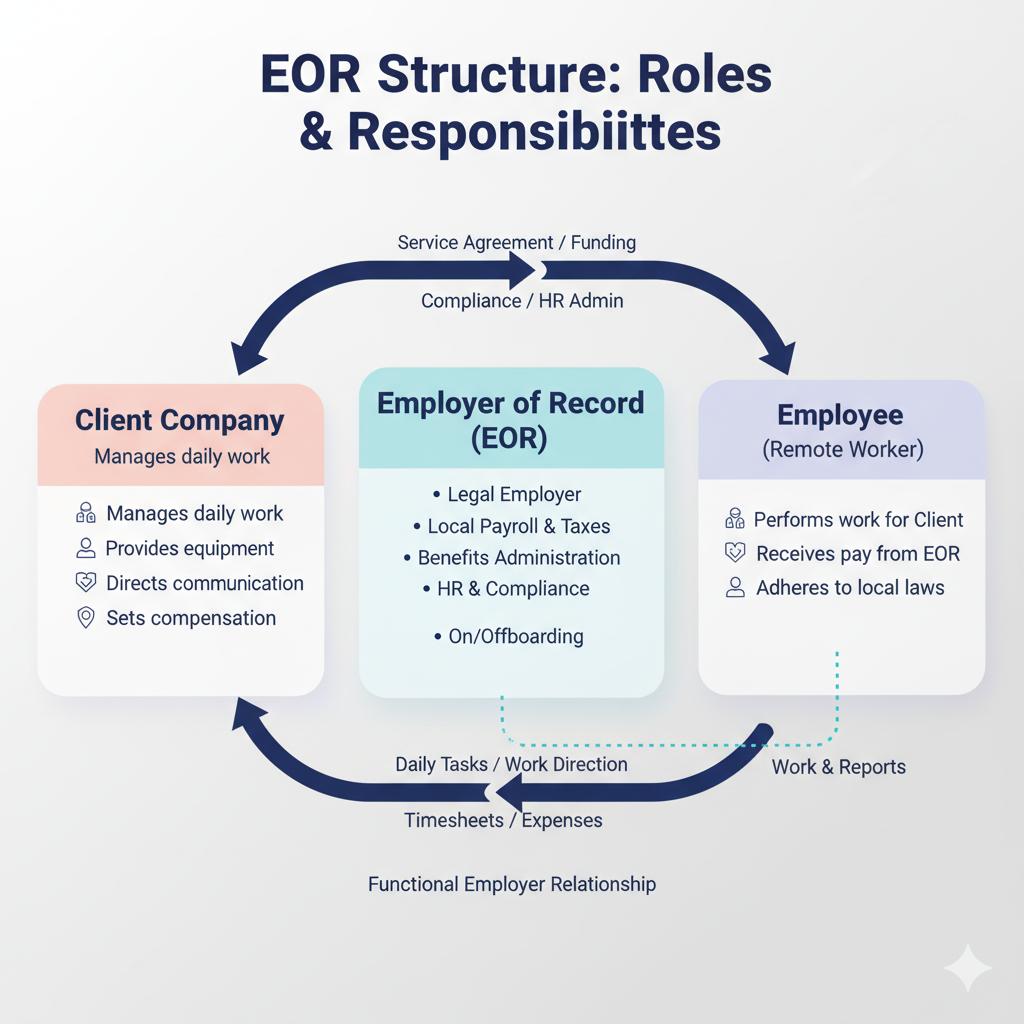Contractors feel faster and cheaper until a labour inspector reclassifies them as employees, then you're facing back taxes, social contributions, and penalties that can exceed €50,000 per worker. For finance companies scaling across Europe, this isn't hypothetical: regulators like BaFin, the FCA, and ACPR actively scrutinise workforce structures, and misclassification findings can derail funding rounds, trigger capital provisions, and expose gaps in GDPR and AML controls.
An Employer of Record (EOR) transfers legal employment risk to a third party while you keep operational control, closing compliance gaps and giving Finance, HR, and Legal teams audit-ready documentation. This article covers the hidden risks of contractor models, how EORs eliminate compliance exposure, real cost comparisons, and a practical plan to switch without disrupting your team.
Key Takeaways
- Contractor misclassification in European finance triggers back taxes, social contributions, and penalties often exceeding €50,000 per worker
- An EOR transfers legal employment risk while you keep operational control and get 24-hour onboarding across 180 countries
- Finance companies face extra scrutiny from regulators like BaFin, the FCA, and ACPR, making compliant employment structures essential
- Switching from contractors to EOR closes GDPR gaps, strengthens AML controls, and provides audit-ready documentation
- Teamed's AI Agents automate 70% of payroll and HR tasks while experts handle edge cases
The Hidden Risks Of Contractor Models In European Finance
Finance companies often start with contractors because hiring feels faster, budgets stay flexible, and there's no entity to set up. However, this approach creates real compliance risks around employment status, taxation, data protection, and sector regulation—risks that trigger fines, audits, and operational disruption.
Regulatory Fines For False Self-Employment
False self-employment happens when a contractor works under conditions that look like employment under local law. European labour authorities don't care what your contract says—they examine how work actually gets done. They check five key factors:
- Control: Fixed schedules, detailed supervision, and performance reviews managed by the client
- Integration: Use of company email, tools, org charts, and participation in core teams
- Exclusivity: Single-client dependency and ongoing work with no clear project end date
- Economic dependence: Client-provided equipment and no meaningful business risk
- Personal service: The contractor can't freely substitute themselves with another qualified person
When investigations find false self-employment, you face back taxes, social contributions, interest, penalties, and joint liability. In Germany, misclassification results in retroactive social security contributions exceeding €50,000 per worker, plus penalties up to 40%. Spain's labour inspectorate issues fines reaching €10,000 per misclassified contractor.
Capital Adequacy And Audit Implications
Misclassification affects financial services firms' regulatory perimeter and risk profile in ways that matter to the board and investors. Reclassification liabilities may require accounting provisions that reduce capital ratios and regulatory buffers. Audit findings on employment compliance increase operational risk capital charges under Basel III and CRD IV frameworks.
Regulators view contractor-heavy models as weak workforce governance under EBA, ESMA, and local rules. This triggers remediation plans, board-level oversight, and extended audit cycles. For a mid-market investment firm managing €500 million in assets, a single material finding on employment compliance can delay funding rounds or require capital injections.
Data Residency And AML Breaches
Contractor setups create gaps in GDPR and AML frameworks that regulators examine during inspections. Uncontrolled processing by contractors' personal devices and cloud tools risks cross-border data transfers without Standard Contractual Clauses (SCCs) or Data Protection Impact Assessments (DPIAs). Contractors outside formal HRIS systems lack proper identity and access management (IAM), logging, and timely revocation.
Insufficient training, screening, and recordkeeping for contractors also undermine AML policies, audit trails, and suspicious activity reporting (SAR) obligations. A payment services provider operating under PSD2 faces heightened scrutiny on data governance. If contractors access customer transaction data without proper controls, you risk fines under both GDPR (up to €20 million or 4% of global turnover) and national AML regimes.
How An Employer Of Record Eliminates Compliance Exposure
An Employer Of Record (EOR) acts as the legal employer on paper, handling payroll, contracts, taxes, and compliance while you direct day-to-day work. You keep control over tasks, performance, and business outcomes. The EOR assumes statutory employer obligations and removes misclassification risk entirely.








